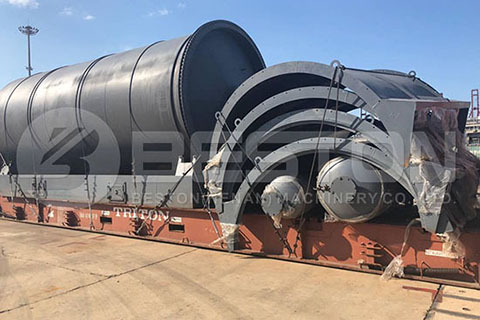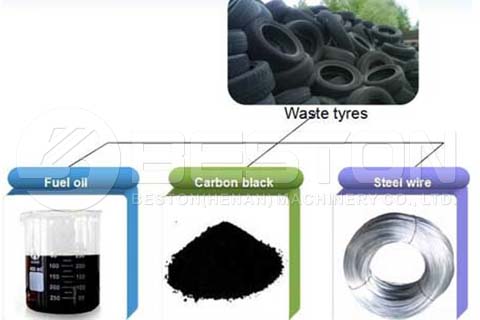On a global scale, more than 1.5 billion tires are manufactured each year, with over 300 million of them in the United States alone. Eventually, all of those tires become worn and need to be disposed of. The good news is that waste tires present a great material for energy recovery and resource recovery.
In the past, recovering valuable components from rubber waste was not economically viable, but all that has changed thanks to the invention of modern pyrolysis plant. Some of the resources that can be recovered from tire waste via pyrolysis are carbon black, tire oil, steel wire, and combustible gas. All of those resources are profitable commodities, so those looking to set up a tire to oil plant can look forward to large annual profits.

In addition to having great economic viability, another reason why tire to oil plants can be a smart investment is that they don’t produce any pollution. Given that many countries around the world are offering incentives to businesses to promote environmentally friendly practices, there has never been a better time to enter the waste tire recycling business.
So, how does a tire to oil machine work? Well, it is relatively simple. Inside of an oxygen-free reaction chamber, tire waste is heated to temperatures exceeding 300 degrees celsius. Due to the lack of oxygen in the environment, instead of combusting, the rubber in the tires vaporizes. The vapor then flows through a water-cooled condensing system where it is separated into oil of varying viscosities. In addition to fuel oil being produced, combustible gas is also generated and is used to refuel the reactor’s furnace. The residue left in the reactor after complete pyrolysis is carbon black and steel wire.

If you are looking to set up your own tire to oil production plant, some key pieces of machinery to buy include an automatic tire shredder or grinding machine, a rubber pyrolysis reactor and a distillation machine. The reason you need a grinding machine is that for efficient pyrolysis, the tire waste must enter the reactor in small, evenly-sized particles. A distillation machine is optional but it can be used to turn pyrolysis oil into more mainstream fuels, such as gasoline and diesel oil.
You will find waste tyre pyrolysis plant for sale online (https://wasterecyclingplant.com/waste-tyre-pyrolysis-plant-for-sale/), but it’s important to make sure you order from a top-rated global manufacturer like Beston Machinery. You also need to make sure that the technical specifications of a particular tire to oil machine are sufficient for the daily processing requirements of your business. Small machines have daily capacities of around 6 tons, while large models have daily capacities exceeding 24 tons.
When it comes to pyrolysis plant prices, there are many factors that impact the cost, including working method, reactor size, operating pressure, lifespan, daily capacity, total power, size, and supplier. Suppliers with the lowest waste tire to oil plant prices tend to be based in China. The good news is that such suppliers export their products to international locations. More cost information can be found: https://wasterecyclingplant.com/plastic-pyrolysis-plant-cost/.